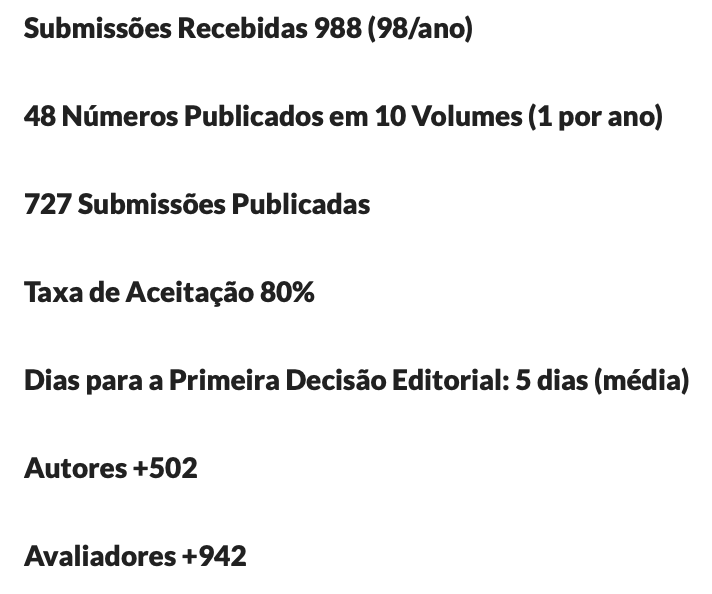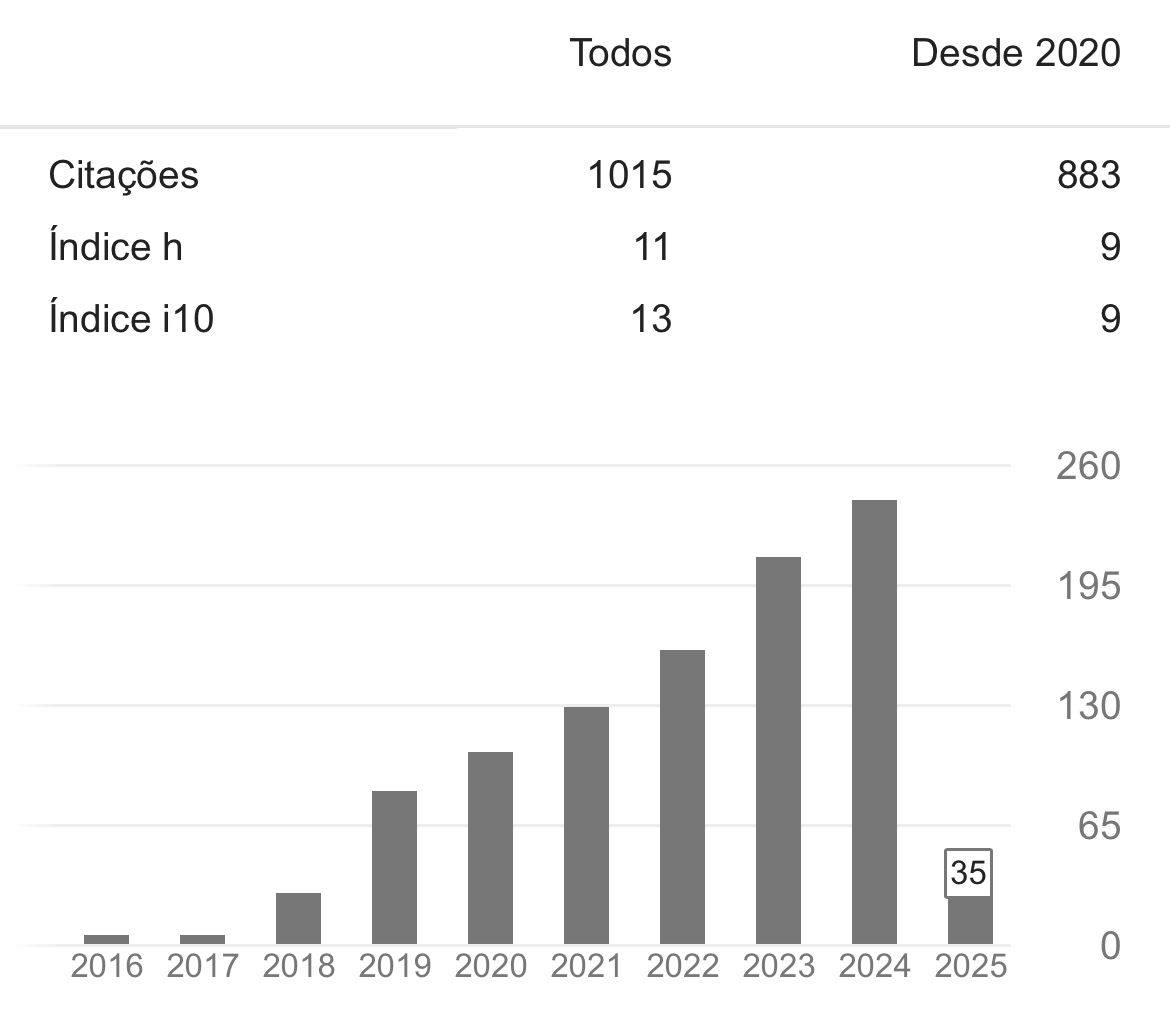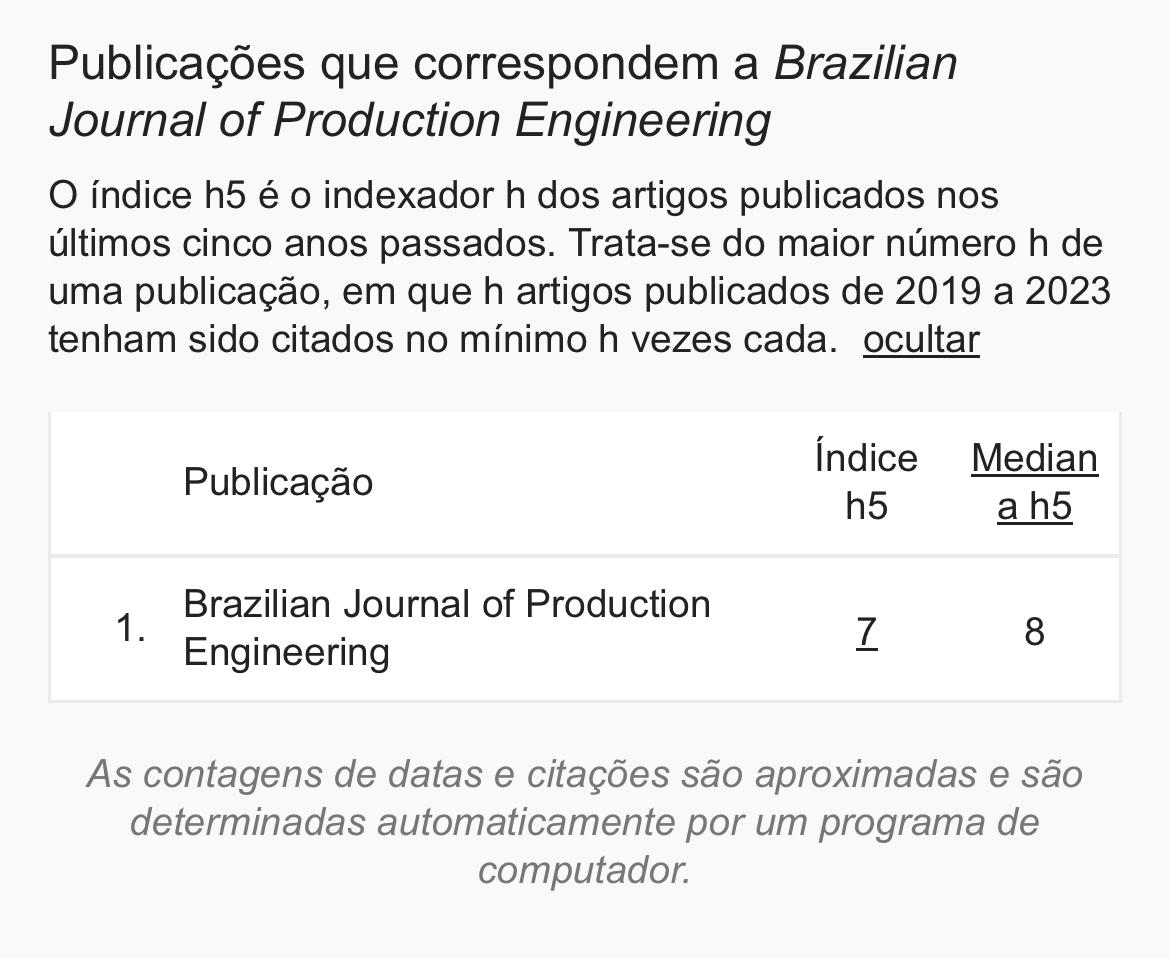NR 17 in the academic context: applied in technical education
DOI:
https://doi.org/10.47456/bjpe.v7i1.33772Keywords:
ergonomics, professional education, technical educationAbstract
The interdisciplinary nature of ergonomics makes it remarkably applicable to various fields that involve human performance. Education is a field in which ergonomics can make a significant contribution, but the application of educational ergonomics receives only limited attention. Thus, the objective of the present study was to analyze the ergonomic risks, of state employees (teachers, administrative) and outsourced workers (general services assistant, security guards) of a medium level technical professional education institution, in order to contribute to the organization and/or ergonomic reorganization in the educational environment. Quantitative semi-structured electronic questionnaires were conducted in the form of individual interviews, for server and outsourced groups. Subsequently, the intervention in the educational environment involved a course on educational ergonomics, applied to the group of students, in addition to an educational campaign - Webinar. The results showed, in general, the levels of discomfort/pain classified as moderate and intense, based on the questionnaires answered by the servers and outsourced workers. It was also noted the students' lack of knowledge regarding educational ergonomics and related areas. In conclusion it is necessary that educational and ergonomic intervention and greater teacher-student-educational environment interaction in the universe of ergonomics.
Downloads
References
ABERGO. Associação Brasileira de Ergonomia. Disponível em: http://www.abergo.org.br/internas.php?pg=o_que_e_ergonomia. Acesso em: 13 maio 2020.
Alves, C. S., Araújo, M. M., & Aguiar, C. H. A. (2014). Postura ergonômica do profissional docente: Um estudo de caso do Centro de Atenção Integrada à Criança e ao Adolescente (CAIC) Senador Carlos Jereissati, em Russas-CE. Revista Tecnologia & Informação, 1(3), 20-32. (ISSN 2318 9622)
Alves, W. F. (2018). A invisibilidade do trabalho real: o trabalho docente e as contribuições da ergonomia da atividade. Revista Brasileira de Educação, 23(1), e230089. (http://dx.doi.org/10.1590/S1413-24782018230089)
Ansari, S., Nikpay, A., & Varmazyar, S. (2018). Design and development of an ergonomic chair for students in educational settings. Health Scope, 7(4), e60531. (https://doi.org/10.5812/jhealthscope.60531)
BRASIL. Lei nº 10.406, de 10 de janeiro de 2002. Institui o Código Civil. Diário Oficial da União: seção 1, Brasília, DF, ano 139, n. 8, p. 1-74, 11 jan. 2002.
______. Ministério do Trabalho. Portaria MTb nº 876, de 24 de outubro de 2018 - NR 17. Altera Norma Regulamentadora NR 17 - Ergonomia. Diário Oficial da União: seção 1, Brasília, DF, n. 207, p. 81, 26 out. 2018.
Cañete, L., Palominos, F., Díaz, H., Córdova, F., & Cifuentes, F. (2015). Relationship between the ergonomic state of the classroom measured in energy units and the well-being of students observed by non-invasive instrumentation. Procedia Computer Science, 55(1), 28-34. https://doi.org/10.1016/j.procs.2015.07.166
Corlett, E. N., & Manenica, I. (1980). The effects and measurement of working postures. Applied Ergonomics, 11(1), 7-16. https://doi.org/10.1016/0003-6870(80)90115-5
Fidelis, O. P., Ogunlade, B., Adelakun, S. A., & Adukwu, O. (2018). Ergonomic analysis of classroom furniture in a Nigerian university. Nigerian Journal of Technology, 37(4), 1154-1161. https://doi.org/10.4314/njt.v37i4.40
Gligorović, B., Desnica, E., & Palinkaš, I. (2018). The importance of ergonomics in schools – secondary technical school students’ opinion on the comfort of furniture in the classroom for computer aided design. IOP Conf. Series: Materials Science and Engineering, 393(1), 012111. https://doi.org/10.1088/1757-899X/393/1/012111
Guimarães, M. C. (2009). Transformações do trabalho e violência psicológica no serviço público brasileiro. Revista Brasileira de Saúde Ocupacional, 34(120), 163-171. (ISSN 0303 7657).
Leme, A., & Maia, I. (2015). Evaluation of fatigue at work in teachers using modern resources in the classroom. Procedia Manufacturing, 3(1), 4852-4859. https://doi.org/10.1016/j.promfg.2015.07.601
Okulova, L. P. (2020). An ergonomic approach to higher education of psychology and pedagogy students. Espacios, 41(2), 13-22. (ISSN 0798 1015)
Oyewole, S. A., Haight, J. M., & Freivalds, A. (2010). The ergonomic design of classroom furniture/computer work station for first graders in the elementary school. International Journal of Industrial Ergonomics, 40(4), 437-447. https://doi.org/10.1016/j.ergon.2010.02.002
Parvez, M. S., Rahman, A., & Tasnim, N. (2019). Ergonomic mismatch between students anthropometry and university classroom furniture. Theoretical Issues in Ergonomics Science, 20(5), 603-631. https://doi.org/10.1080/1463922X.2019.1617909
Rantala, L., Sala, E., & Kankare, E. (2018). Teachers’ working postures and their effects on the voice. Folia Phoniatrica et Logopaedica, 70(1), 24-36. https://doi.org/10.1159/000487593
Safarian, M. H., Rahmati-Najarkolaei, F., & Mortezapour, A. (2018). A comparison of the effects of ergonomic, organization, and education interventions on reducing musculoskeletal disorders in office workers. Health Scope, 8(1), e68422. https://doi.org/10.5812/jhealthscope.68422
Sarmento, T. S., Villarouco, V., & Attaianese, E. (2019). Ergonomic analysis of secondary school classrooms, a qualitative comparison of schools in naples and recife. In: Bagnara, S., Tartaglia, R., Albolino, S., Alexander, T., & Fujita, Y. (eds) Proceedings of the 20th Congress of the International Ergonomics Association (IEA 2018), 825(1), 537-546. https://doi.org/10.1007/978-3-319-96068-5_60
Silva-Macaia, A. A., Fischer, F. M., Silva, J. P., & Paparelli, R. Saúde dos professores: uma ambiguidade a resolver. FUNDACENTRO. Atualizado em [09 set. 2016]. Disponível em: http://www.fundacentro.gov.br/dia-10-de-outubro/saude-dos-professores. Acesso em: 13 maio 2020.
Downloads
Published
How to Cite
Issue
Section
License
Copyright (c) 2021 Brazilian Journal of Production Engineering - BJPE

This work is licensed under a Creative Commons Attribution-NonCommercial-ShareAlike 4.0 International License.

















































































